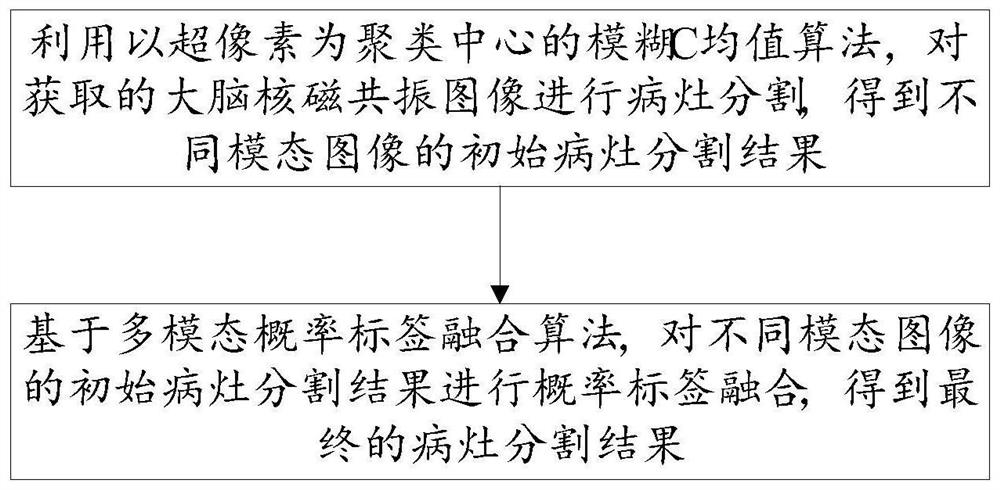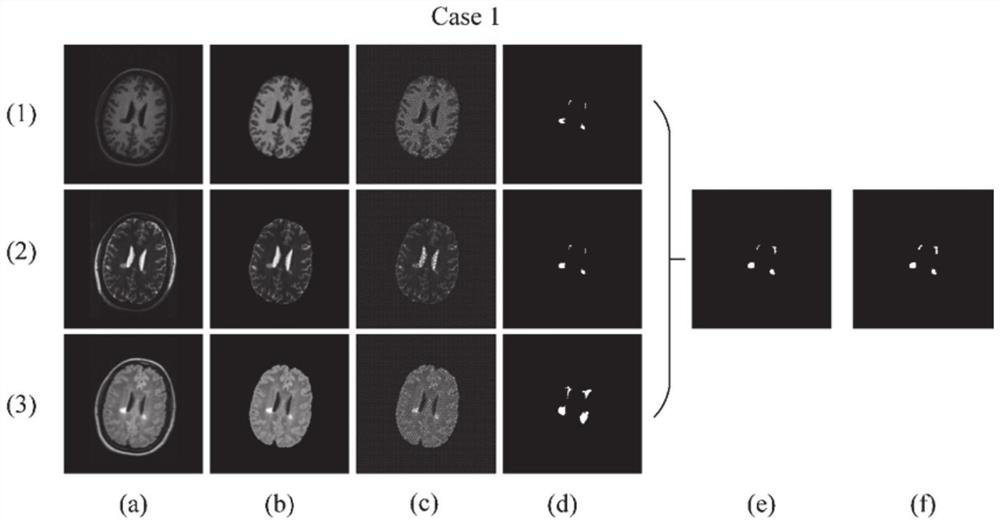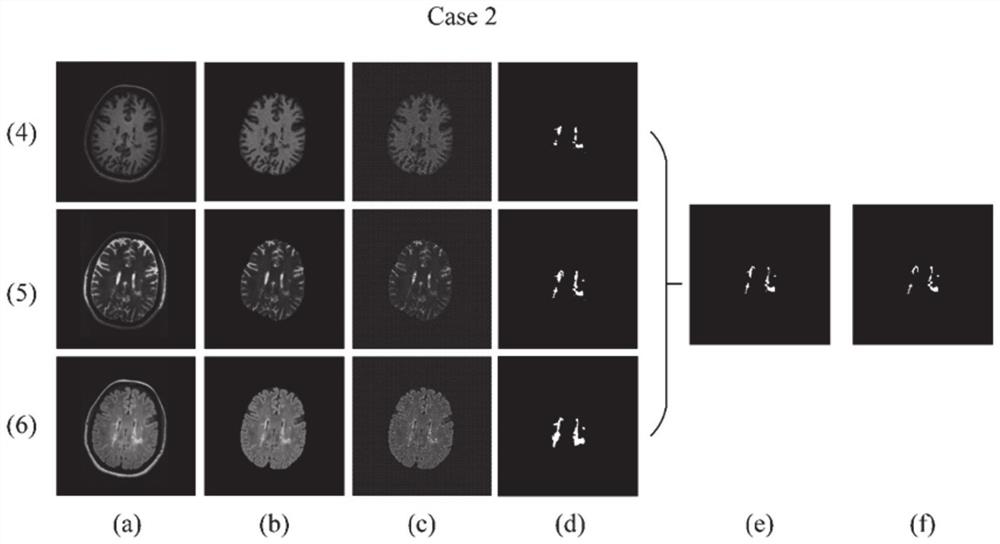Image segmentation method and system based on fuzzy C-means and probability label fusion
A label fusion and image segmentation technology, applied in the field of medical image processing, can solve the problems of discontinuity, inability to achieve lesion image segmentation, complex gray distribution, etc., and achieve the effect of accurate segmentation.
- Summary
- Abstract
- Description
- Claims
- Application Information
AI Technical Summary
Problems solved by technology
Method used
Image
Examples
Embodiment 1
[0029] This embodiment provides an image segmentation method based on fusion of fuzzy C-means and probability labels;
[0030] Such as figure 1 As shown, the image segmentation method based on fuzzy C-means and probability label fusion, including:
[0031] S101: Using the fuzzy C-means algorithm with superpixels as the clustering center, perform lesion segmentation on the acquired brain MRI images, and obtain initial lesion segmentation results of images of different modalities;
[0032] S102: Based on the multimodal probability label fusion algorithm, perform probability label fusion on initial lesion segmentation results of different modal images to obtain a final lesion segmentation result.
[0033] As one or more embodiments, in the S101, the brain MRI image is segmented using the fuzzy C-means algorithm with superpixels as the clustering center to obtain the initial lesion segmentation results of images of different modalities; the specific steps include:
[0034] S101-...
Embodiment 2
[0149] This embodiment provides an image segmentation system based on fusion of fuzzy C-means and probability labels;
[0150] An image segmentation system based on fuzzy C-means and probabilistic label fusion, including:
[0151] The initial segmentation module is configured to: use the fuzzy C-means algorithm with superpixels as the clustering center to perform lesion segmentation on the acquired brain MRI images, and obtain initial lesion segmentation results of images of different modalities;
[0152] The probability label fusion module is configured to perform probability label fusion on initial lesion segmentation results of different modal images based on a multimodal probability label fusion algorithm to obtain a final lesion segmentation result.
[0153]It should be noted here that the above-mentioned initial segmentation module and probability label fusion module correspond to steps S101 to S102 in the first embodiment, and the examples and application scenarios impl...
Embodiment 3
[0157] This embodiment also provides an electronic device, including: one or more processors, one or more memories, and one or more computer programs; wherein, the processor is connected to the memory, and the one or more computer programs are programmed Stored in the memory, when the electronic device is running, the processor executes one or more computer programs stored in the memory, so that the electronic device executes the method described in Embodiment 1 above.
[0158] It should be understood that in this embodiment, the processor can be a central processing unit CPU, and the processor can also be other general-purpose processors, digital signal processors DSP, application specific integrated circuits ASIC, off-the-shelf programmable gate array FPGA or other programmable logic devices , discrete gate or transistor logic devices, discrete hardware components, etc. A general-purpose processor may be a microprocessor, or the processor may be any conventional processor, o...
PUM
 Login to View More
Login to View More Abstract
Description
Claims
Application Information
 Login to View More
Login to View More - R&D
- Intellectual Property
- Life Sciences
- Materials
- Tech Scout
- Unparalleled Data Quality
- Higher Quality Content
- 60% Fewer Hallucinations
Browse by: Latest US Patents, China's latest patents, Technical Efficacy Thesaurus, Application Domain, Technology Topic, Popular Technical Reports.
© 2025 PatSnap. All rights reserved.Legal|Privacy policy|Modern Slavery Act Transparency Statement|Sitemap|About US| Contact US: help@patsnap.com



